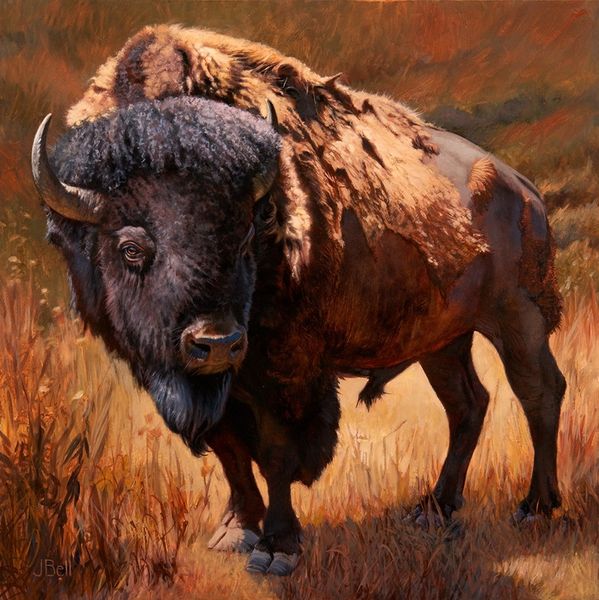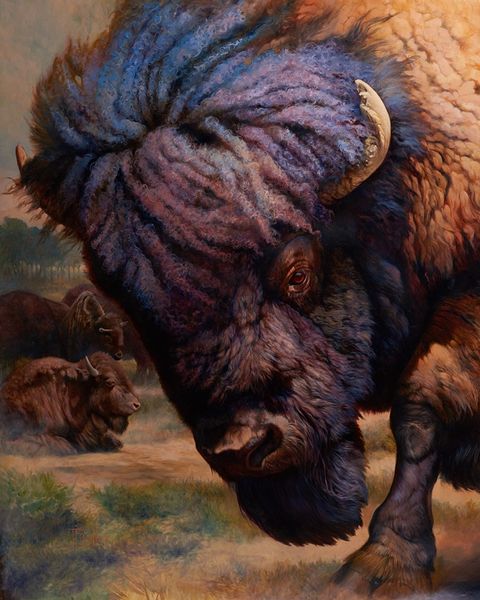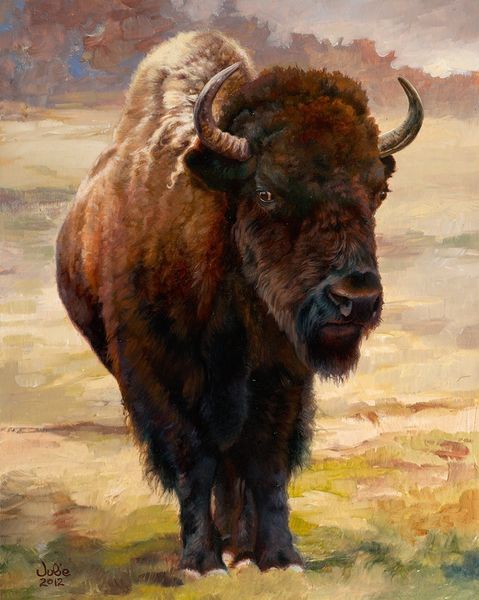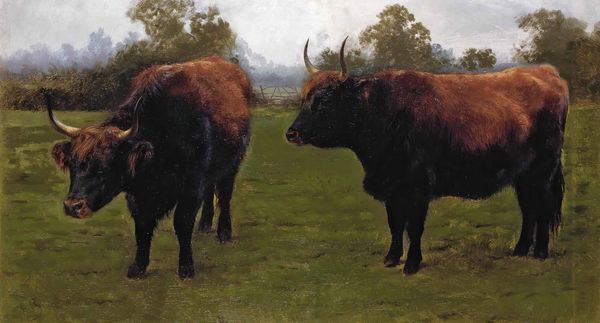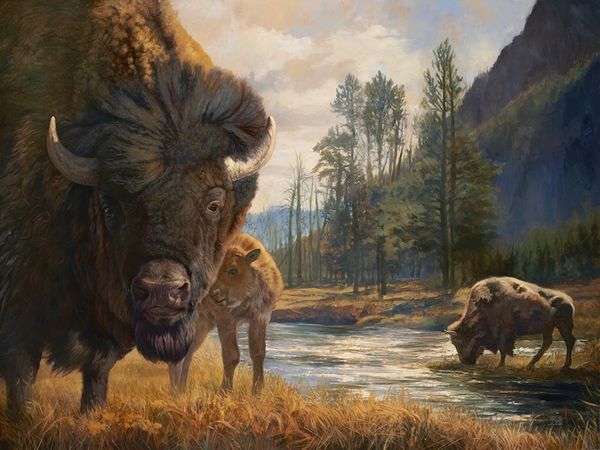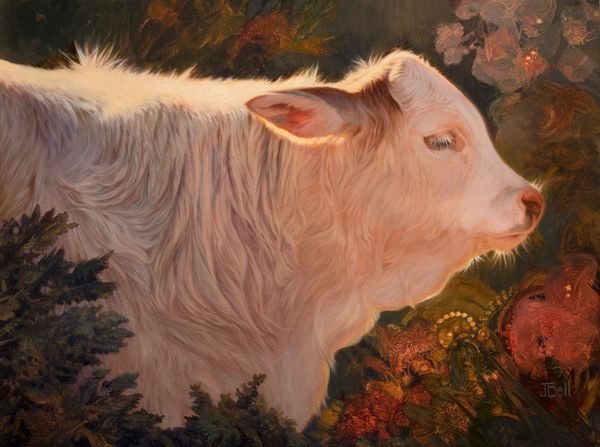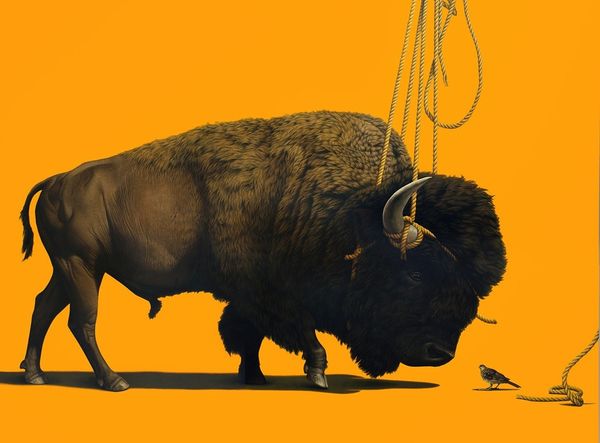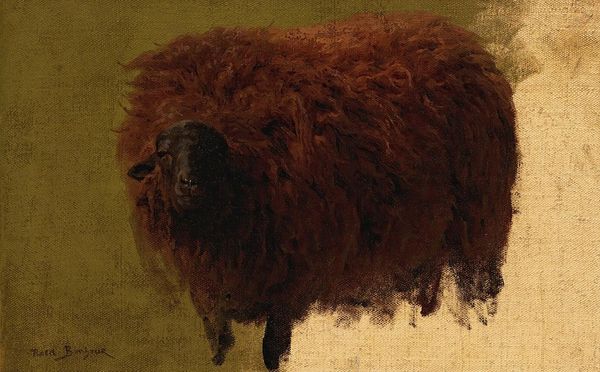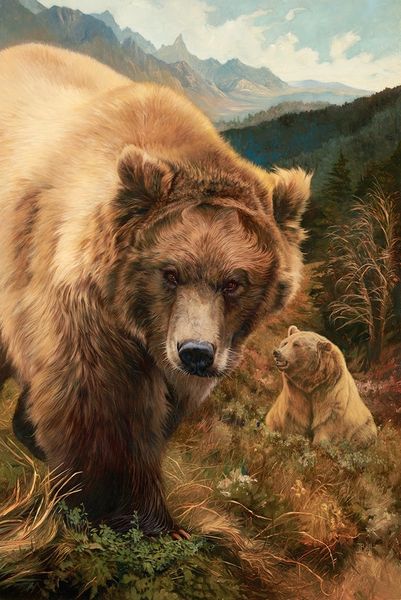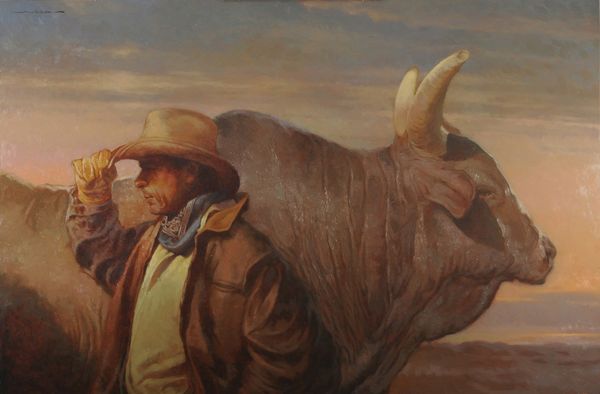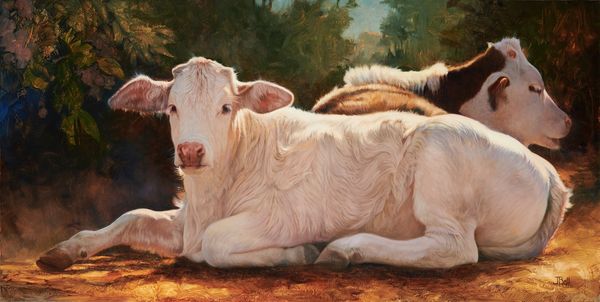
painting, oil-paint
#
portrait
#
animal
#
painting
#
oil-paint
#
oil painting
#
animal portrait
#
realism
Copyright: Modern Artists: Artvee
Editor: This piece, called "Sisters" by Julie Bell, seems to be an oil painting depicting two bison in a very close, intimate pose. The realism is quite striking, really highlighting the texture of their fur and the subtle differences in their coloring. What's particularly interesting to me is the... labor of capturing all of this detail with oil paints. How would you interpret this work? Curator: Well, given the commitment to realism, let’s look at this through a material lens. Notice how the oil paint itself is used to convey not just the image of bison, but also the very textures – the density of the fur, the smoothness of the horns. Consider, then, the economic factors related to the availability and distribution of high-quality pigments and brushes to Julie Bell to achieve this remarkable result. It also begs questions about who traditionally gets access to this means of production. Editor: That's interesting, I hadn't considered the material cost itself. Curator: And that's before we even consider what might have inspired the selection of bison as the subject. Were bison readily available where Bell lived or painted? Was there a consumer market that encouraged the depiction of the animal as "sisterly" for an emotional effect, or was it also a form of... domestication through art, shaping a relationship of these animals for a primarily urban, perhaps environmentally distanced consumer class? Editor: So it's about understanding the means, the cost, the labour that's being embedded to highlight what the work is. Curator: Precisely, by examining those elements, we see art is not isolated from culture, society and market pressures, but an active component within it. Editor: I can definitely see that connection more clearly now. I appreciate this unique look into it. Curator: And I trust that my materialist's eyes have sharpened yours. It's rewarding when we reflect more broadly.
Comments
No comments
Be the first to comment and join the conversation on the ultimate creative platform.


